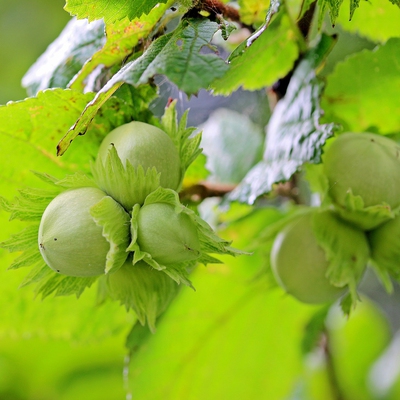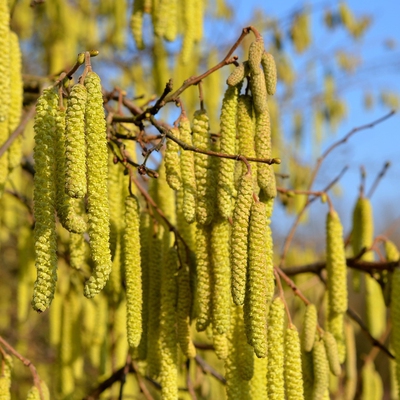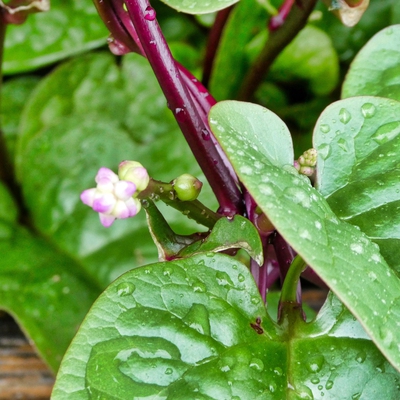When to plant and harvest Hazelnuts, pests and troubleshooting notes for the home gardener and much more!
 Soil
Soil
What soil is good for Hazelnuts?
Hazelnuts require well draining soil with plenty of compost mixed in.
Like most nut trees, Hazelnuts require deep, well draining soil. They will not tolerate waterlogged soil and will develop root rot as a result. Avoid planting in heavy clay unless the soil has been amended. Heavy soils can be improved by incorporating gypsum and organic matter and mounding the soil before planting to improve drainage.
 Position
Position
How much sun do Hazelnuts need?
Plant Hazelnuts in a full sun position. Hazelnuts do benefit from afternoon shade in really hot climates.
 Frost Tolerant
Frost Tolerant
Are Hazelnuts frost tolerant?
Yes, Hazelnuts are frost tolerant.
 Spacing
Spacing
How much space do Hazelnuts need?
Plant Hazelnuts roughly 4m apart.
 Planting
Planting
When should I plant Hazelnuts?
Late autumn or early spring is the best time to transplant most dormant plants. Plants, with the exception of bare-root, can be transplanted at anytime between when the ground thaws and when it freezes (so anytime if you are in a frost free climate). However, if transplanting in the heat of summer, you'll need to be diligent in watering and provide extra shade for your plant in the first few weeks after transplanting.
Dig a hole 2-3 times the width of the root ball. The hole should allow the plant to sit at the same level in the soil as it was previously. Fill the hole with soil ensuring the crown of the plant, where roots and stem meet, is level with the soil surface.
Plant out in the early morning or evening and/or on an overcast day. Avoid planting at peak sun times or on windy days, this will allow your plants to settle in comfortably and protect them from windburn and sunburn.
 Feeding
Feeding
What do I feed Hazelnuts?
Top-dress the soil around your Hazelnut plants with well rotted organic matter in spring. Fertiliser is not generally needed, overly nutrient rich soil will promote excess leaf growth at the expense of nut production. If plants begin showing signs of nutrient deficiency, apply an organic liquid fertiliser as needed.
Add a 2-3 inch layer of mulch around the tree up to the drip line to retain moisture (be careful not to pile mulch against the tree trunk as this may lead to trunk rot and disease).
 Harvesting
Harvesting
When can I harvest Hazelnuts?
Hazelnuts are usually ready to be harvested around autumn time, when the husks have turned yellow. When ripe, the nuts may be shaken from the tree onto an underlying tarp to harvest. Nuts should be stored in a dry space with good air-flow.
 Pests
Pests
What pests do Hazelnuts get?
Pests that affect Hazelnuts include: Aphids, Filbertworm and Acorn Moth, Nut Weevil, Brown Marmorated Stink Bug, Eyespotted Bud Moth, Filbert Bud Mite, Filbert Leafroller, Garden Symphylan, Obliquebanded Leafroller, Omnivorous Leaftier, Pacific Flatheaded Borer, Scale Insect, Shothole Borer, Spidermite, Tent Caterpillar, Winter Moth, Twig Borer, Ambrosia Beetle, Hazel Longhorned Beetle.
 Diseases
Diseases
What diseases do Hazelnuts get?
Diseases that affect Hazelnuts include: Armillaria Root Rot, Eastern Filbert Blight, Powdery Mildew, Bacterial Blight, Bacterial Canker, Hazelnut Mosaic.
 Notes
Notes
Is there anything else I need to know about Hazelnuts?
Hazelnut trees can be grown as a tree or pruned into bush form.
At the end of the season, prune the tree in order to remove old or unproductive wood. Open up the centre to let light and air in by removing any overlapping branches, this will help to prevent disease. Prune any unwanted suckers from the base of the plant to allow for more energy to be directed to the main plant.
 Troubleshooting
Troubleshooting
How do I troubleshoot my growing problems?
Hazelnuts are wind pollinated and require another Hazelnut tree, from a compatible variety to be planted nearby for effective pollination.








